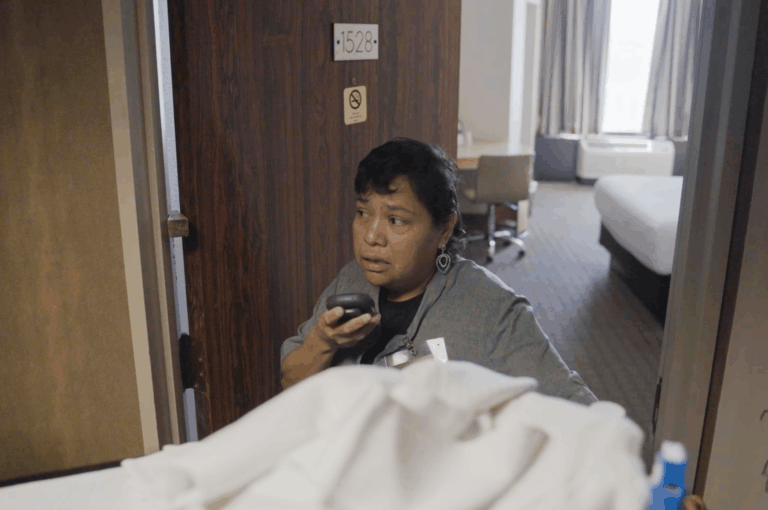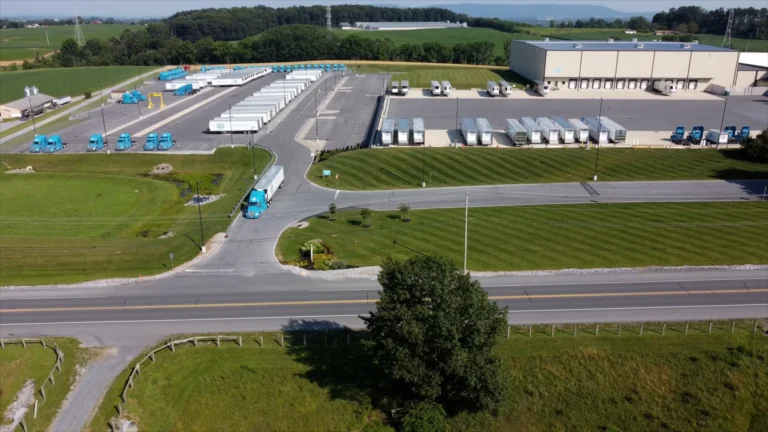Gone are the days when walkie-talkies were just for recreation. There are still two-way radios or walkie-talkies for hiking, camping, and other recreational activities, but walkie-talkies are also used in industries such as warehousing, construction, and hospitality. When teams are looking for ways to communicate across long distances, breaking through traditional communication limitations, long-distance walkie-talkies make that possible.
Whether you’re looking for an effective method for outdoor communication or researching the best business walkie-talkies, we’ll walk you through the features of this type of two-radio and how it compares to other handheld radios and long-range communication devices.
What Is a Long Distance Walkie Talkie?
Long-distance walkie-talkies are a specific type of two-way radio that is able to reach across longer distances. They’re great for outdoor communication and can be effective for emergency communication as well. Like other two-way radios, many long distance walkie-talkies use half-duplex communication, meaning they offer two-way communication but only one person can talk at a time. Other types of communication include simplex communication, where communication only goes one way, and full-duplex communication, like a cell phone, where both users can talk at the same time.
Motorola walkie-talkies were some of the first to become available in the 1940s, although Motorola was known as the Galvin Manufacturing Company at the time.
When you’re considering a two-way radio like a walkie-talkie for your team, one of the biggest questions is: how far does it reach? The main difference between standard walkie-talkies and long-distance walkie-talkies is the range.
How Far Can Long-Distance Walkie-Talkies Reach?
The exact range can vary depending on the type of radio, but generally, standard walkie-talkies have a range of 2-5 kilometers or 1-3 miles. Many factors can affect the range of a walkie-talkie, so the maximum distance of a certain model isn’t necessarily the range you’ll be able to achieve. Comparatively, the best long-range walkie-talkies reach distances up to 15 kilometers or 9 miles.
Consider Relay as your next long distance walkie talkie. Book a demo with one of our product experts today to learn more.

What Factors Affect the Range of a Walkie-Talkie?
As you’re looking for the right walkie-talkie for your team, it’s important to keep in mind that the range listed isn’t always practical since even the weather can impact a radio’s range. The factors that impact the range of a walkie-talkie include:
- Type of walkie-talkie – There are different types of two-way radios, including devices that use radio frequencies and devices that rely on a cellular network.
- Environment – One of the biggest factors that impacts the range of a walkie-talkie is the environment, especially when used for outdoor communication. Things like mountains or hills can disrupt radio signals. Weather patterns can also impact range.
- Obstructions – There can be disruptions in the radio signal for both indoor and outdoor communication. Walls, buildings, and other structures can prevent a clear signal from getting through.
How Do I Extend the Range of My Walkie-Talkie?
While there are limitations to the range of a walkie-talkie, there are also ways to extend the range to make it more beneficial for your team. Using walkie-talkie accessories such as radio repeaters to increase the range of your device can be beneficial when you’re facing interruptions and obstructions in your signal. However, these solutions can often be costly for your business, and even with these tools, you may not achieve the range you need for effective communication. In this case, consider a smart radio, which uses Wifi and cellular connectivity to transmit messages, giving you nationwide connectivity.
Do I Need a License to Use a Long-Distance Walkie-Talkie?
If you’re searching for license-free walkie-talkies, the good news is, many long-range walkie-talkies can be used without a license. GMRS radios are a specific type of two-way radio that requires a license. That’s because these radios are licensed by the Federal Communications Commission and use specific radio channels. The GMRS channels are typically used for short-distance, two-way voice communications through hand-held radios, mobile radios, and repeater systems.
What Is the Difference Between FRS Walkie-Talkies and GMRS Walkie-Talkies in Terms of Range?
While you need a license to access the General Mobile Radio Service (GMRS,) Family Radio Service (FRS) radios don’t require a license. The FRS frequency is designated for public use, which means anyone can use it without a license.
How Do Long-Distance Walkie-Talkies Compare to Other Communication Devices?
If you’re considering a change in how your team communicates, it’s worth comparing long-range walkie-talkies with other communication devices. There are plenty of options out there, from digital walkie-talkies and analog walkie-talkies to smart radios like Relay. Each type of device has pros and cons, and what works best for you will depend on what features are most important for your industry.
Long Range vs Traditional Walkie-Talkie Comparison
Long range and traditional walkie talkies function in much the same way. The main difference between them is the range. While traditional walkie-talkies are typically able to reach up to 3 miles, long-range walkie-talkies can reach up to 9 miles. This can make a significant difference for teams that are communicating across different locations or distances.
Long Range Walkie-Talkie vs Cell Phone Comparison
When used for communication, long-range walkie-talkies and cell phones have the same purpose; however, they have different limitations. Since mobile devices rely on WiFi or a cellular network, two-way radios are generally more reliable in remote areas with limited cell coverage. You’re also more likely to find rugged walkie-talkies or waterproof walkie-talkies that can withstand conditions most cell phones can’t.
Long Range Walkie-Talkie vs Relay Comparison
Even though long-distance walkie-talkies can be useful in many work environments, there are still limitations that prevent some teams from communicating clearly. Two-way radios are prone to radio interference, which is often caused by limited channel selection. Although some walkie-talkies use privacy codes, also known as CTCSS, to reduce interference and create a more private network, this feature doesn’t prevent outside users from hearing incoming messages.
Replace Your Long-Range Radios With Relay
There are many advantages to using a long-range radio or walkie-talkie, but there are also many limitations that can’t be overlooked when choosing a communication device for your business. Relay combines the best features of a two-way radio and a cellular device to provide you with a smarter radio you can reliably use anywhere.
Relay devices are capable of automatic network switching, seamlessly weaving together networks to create the most reliable connection. Since our communication devices utilize cell and WiFi connectivity simultaneously, you can communicate with your team across different locations without limiting your range to a few miles.
Relay keeps your team in sync, breaking traditional limitations and language barriers all in one device. Whether you’re looking for a communication device for your team in healthcare, hospitality, or construction, Relay has the features you need to stay connected.
Find out more about how swapping your two-way radio for Relay can benefit your team by booking a one-on-one demo with us today!
FAQs
What are the different types of long-distance walkie-talkies?
Long-distance walkie-talkies are a type of two-way radio, generally categorized into portable or handheld, mobile, and base station radios. Each one has a different function as well as different features. There are also radios that operate on different frequencies, such as FRS and GMRS radios.
How do I set up a long-distance walkie-talkie?
Setting up a long-distance walkie-talkie is similar to any other handheld two-way radio. Once you’ve selected the right device for you and your team, ensure that those who need to communicate are on the same channel and that there are separate channels for each team or group.
How can I troubleshoot common walkie-talkie problems?
If your walkie-talkie isn’t working properly, there may be an issue with the battery or antenna. When communication isn’t clear on your radio, there may be an issue with the channel you’re using or something causing radio interference.
What are the advantages of using long-distance walkie-talkies over cell phones?
Cell phones rely on a cellular network or WiFi, while most walkie-talkies rely on radio waves. The advantage of this type of communication is that it works well in remote or rural areas where cell service may be spotty. However, there are also many limitations when it comes to the range of walkie-talkies, and even things like weather patterns can prevent clear communication.
How do I choose the best long-distance walkie-talkie for my needs?
What type of long-distance walkie-talkie works best for you depends on what you’re using it for. Some of the features to look for in any radio include a durable design, multiple channels, and long-distance range. Features such as push-to-talk and extended battery life can also make communication easier.







